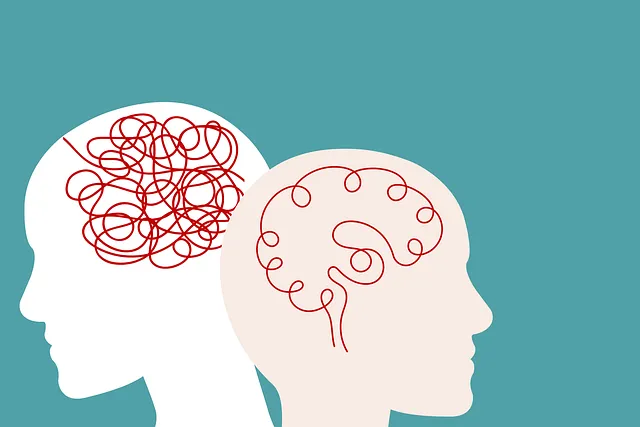The Kaiser Permanente mental health facility in Greenwood Village promotes positive thinking as a powerful tool for enhancing mental well-being. Through self-care, confidence-boosting techniques, gratitude exercises, and communication strategies, they build resilience to navigate life's challenges with ease. Their holistic approach includes Compassion Cultivation Practices and Trauma Support Services, fostering empathy and supportive healing environments. Integrating mindfulness and gratitude journaling reduces stress and burnout in healthcare providers. Success is measured through observable improvements in client mental wellbeing, tracking stress reduction, increased resilience, and enhanced life satisfaction.
“Unleash the power of positive thinking with our comprehensive guide to implementing effective exercises. This article explores how a focused mindset can significantly impact mental health, especially at Kaiser Permanente’s leading example, Greenwood Village. We delve into actionable strategies for integrating these practices into daily routines. By measuring mental wellbeing improvements, you can unlock a healthier, happier you. Discover how Kaiser Permanente’s innovative approach at Greenwood Village serves as a model for cultivating positivity and enhancing overall well-being.”
- Understanding Positive Thinking for Mental Health
- Kaiser Permanente Greenwood Village: A Model Facility
- Integrating Positive Thinking Exercises in Daily Life
- Measuring Success: Tracking Mental Wellbeing Improvements
Understanding Positive Thinking for Mental Health

Positive thinking is a powerful tool for enhancing mental health and overall well-being, recognized even by renowned facilities like the Kaiser Permanente mental health facility in Greenwood Village. It involves consciously shifting one’s mindset to focus on optimistic thoughts, beliefs, and interpretations of situations. This practice can significantly impact an individual’s emotional state, stress levels, and overall resilience. By cultivating positive thinking, individuals can improve their ability to cope with challenges and foster a sense of inner strength and peace.
At the heart of this concept are self-care practices, confidence-boosting techniques, and effective communication strategies. Engaging in regular activities that promote positivity, such as gratitude exercises or surrounding oneself with uplifting influences, can contribute to a more optimistic outlook. Moreover, learning communication strategies enables individuals to express their thoughts and emotions constructively, fostering healthier relationships and social interactions. These practices collectively work towards building a robust foundation of mental resilience, allowing individuals to navigate life’s twists and turns with greater ease.
Kaiser Permanente Greenwood Village: A Model Facility

Kaiser Permanente Greenwood Village stands as a shining example of an integrated mental health facility that prioritizes positive thinking exercises and holistic well-being. This state-of-the-art facility within the Kaiser Permanente network offers a wide array of services, including Compassion Cultivation Practices, designed to foster empathy and resilience among patients. The environment at Greenwood Village encourages open dialogue and effective communication strategies, essential elements in Trauma Support Services.
Through thoughtfully curated programs and dedicated staff, Kaiser Permanente Greenwood Village cultivates a supportive atmosphere that promotes healing and positive outcomes for its clients. Their commitment to innovation and patient-centered care makes it a model facility for mental health treatment, setting a benchmark for other healthcare institutions seeking to enhance their services through compassionate approaches and evidence-based practices.
Integrating Positive Thinking Exercises in Daily Life

Integrating positive thinking exercises into daily routines is a powerful way to enhance overall well-being, as advocated by mental health experts at Kaiser Permanente’s Greenwood Village facility. These practices are particularly beneficial for healthcare providers who often face demanding and stressful work environments, making burnout prevention strategies crucial. By incorporating simple yet effective techniques, professionals can promote emotional well-being and maintain a positive mindset.
One such exercise is mindfulness meditation, which encourages individuals to focus on the present moment, thereby reducing worries about the past or future. This practice can be as short as a few minutes each day and has been shown to decrease stress levels and improve overall mental clarity. Additionally, gratitude journaling allows healthcare providers to reflect on positive aspects of their lives, fostering a sense of appreciation and contentment. Such activities contribute to better risk management planning for mental health professionals by equipping them with tools to navigate challenging situations while maintaining optimal emotional health.
Measuring Success: Tracking Mental Wellbeing Improvements

Measuring Success: Tracking Mental Wellbeing Improvements
At the Kaiser Permanente mental health facility in Greenwood Village, success in implementing positive thinking exercises isn’t solely defined by quantitative metrics. While tracking key performance indicators (KPIs) such as participation rates and client satisfaction is essential, the true measure of effectiveness lies in observing tangible improvements in mental wellbeing. This includes reductions in stress levels, increased resilience to challenges, and enhanced overall life satisfaction among participants. Regular, structured assessments and feedback sessions play a crucial role in this process. By employing validated psychological assessment tools and qualitative feedback mechanisms, the facility can gain insights into clients’ perceived shifts in mindset and emotional state, aligning with the overarching goal of Burnout Prevention Strategies for Healthcare Providers.
Moreover, integrating Coping Skills Development and Mental Wellness Coaching Programs Development within the positive thinking exercises allows for continuous monitoring of progress. As clients cultivate new coping mechanisms and develop a stronger sense of mental resilience, these improvements are documented and celebrated. This data-driven approach not only guides future program enhancements but also serves as a powerful tool to inspire participants, demonstrating the tangible benefits of adopting a more positive mindset.
Positive thinking exercises, when integrated into daily routines, can significantly enhance mental wellbeing, as evidenced by successful programs like those at Kaiser Permanente Greenwood Village. By understanding the power of positive thinking and tracking improvements in mental health, individuals and facilities like Kaiser Permanente can foster a more resilient and optimistic mindset. This approach not only benefits personal growth but also contributes to creating supportive environments that promote overall well-being, mirroring the positive changes seen at this model mental health facility.






